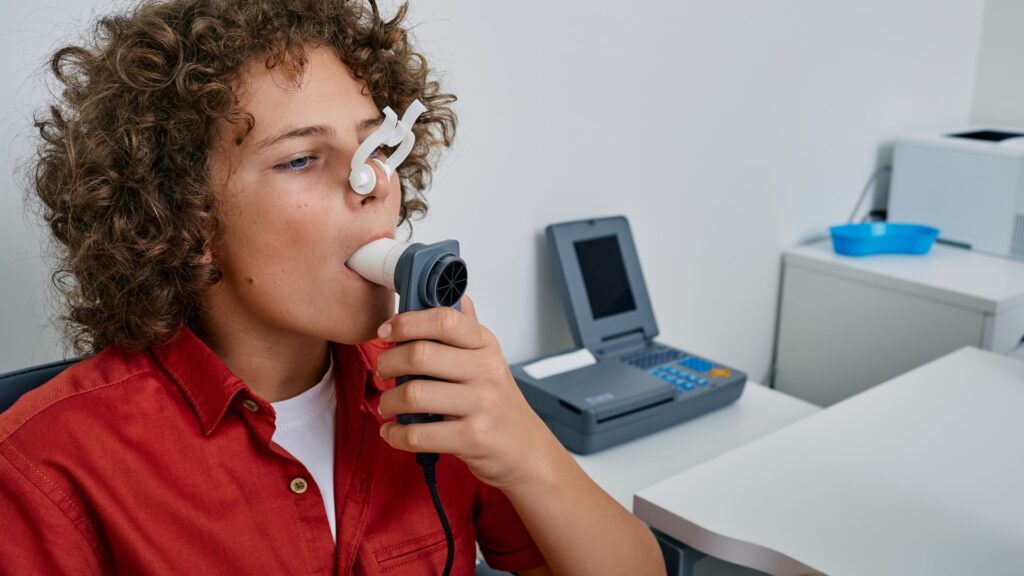Spirometry is a medical procedure used to measure lung function. It is a lung function test that provides information about the volume and speed of air a person can breathe in and out. Spirometry is often used to diagnose, monitor or assess the severity of respiratory diseases.
How does spirometry work?
- The patient breathes through a mouthpiece into a special device called a spirometer.
- During the test, the patient is asked to inhale as deeply as possible and then exhale with maximum force.
- In some tests, normal breathing or a combination of deep inhalation and exhalation can also be measured.
Important measured values
- FVC (forced vital capacity): The maximum amount of air that can be exhaled after a deep breath.
- FEV1 (forced expiratory volume in 1 second): The amount of air that can be exhaled in the first second of a forced exhalation.
- FEV1/FVC ratio: A ratio used to assess obstructive or restrictive lung diseases.
Areas of application
- Diagnosis of respiratory diseases:
- Asthma
- Chronic obstructive pulmonary disease (COPD)
- Restrictive lung diseases (e.g. pulmonary fibrosis)
- Monitoring of disease progression:
- Follow-up of chronic lung diseases
- Assessment of the effect of medication:
- For example, from bronchodilators
- Preoperative examination:
- Evaluation of lung function before certain operations.
Preparation and implementation
- Preparation: Patients should refrain from smoking, heavy meals and strenuous physical activity before the examination.
- Procedure: The test usually only takes a few minutes and is non-invasive, but requires the active cooperation of the patient.
Spirometry is a simple, quick and painless method of obtaining important information about lung function.












